Genoa, a new museum opens, the Museum of the Charterhouse of San Bartolomeo
The new Museum at the Charterhouse of St. Bartholomew in Rivarolo, Genoa, has opened its doors to the public , at the center of a profound restoration project carried out by the Public Works Department of the City of Genoa. The work involved the interior of the Carthusian complex and the cloister, which was deeply damaged by the 2014 flood that led to a collapse of the central part of the east-side loggia. The medieval monastic complex, founded in 1297, will house a new Genoese museum facility: the MUCE - Museo Certosa di Genova - Territorio, Storie, Culture, which will house tangible and intangible evidence of the Polcevera Valley and Genoese territory, including the Roman-Imperial pottery kiln, discovered in 2022 during excavation work for the construction of the new Brin-Canepari subway station in Piazzale Palli, where traces of a manufacturing settlement were found.
The restoration work reconstructed the collapsed parts, solved structural criticalities and improved seismic resistance. The original configuration of the medieval cloister of the Certosa was restored by recovering both its materials and structural functioning thanks to minimally invasive intervention techniques that met the conservation criteria focused on with the Soprintendenza Archeologia, Belle Arti e Paesaggio for the metropolitan city of Genoa and the Province of La Spezia. The garden of the medieval cloister was redeveloped on the basis of the historical traces present: the four large green-treated flower beds, paths and the central well were recovered, and the unevenness between the garden and the three sides of the cloister were resolved. Olive trees were maintained in the garden and borders of plants historically compatible in the Carthusian Monasteries were inserted(Rosmarinus officinalis on the perimeter of the flower beds and, in the arched part around the well, a border of Lavandula latifolia).
Investigations conducted by the Superintendence during the restoration site have provided interesting information on the historical system of water catchment and disposal, a peculiar aspect of the San Bartolomeo complex where accumulation tanks and numerous stretches of water collection tunnels have been discovered, including in the area of the Carthusian Father’s garden.
Next to the upper loggia of the cloister, the intervention has reconstructed a cell of the Carthusian fathers with the adjacent kitchen garden, evocative spaces that will offer the public a special opportunity to discover the way of life of the monks of this order totally dedicated to contemplation, whose commitment and vocation consisted mainly in devoting themselves to the silence and solitude of the cell, “sheltered from the noises of both the world and the house itself.”
Exhibition spaces have been created within the medieval complex, whose cultural and technical project was shared and developed within the framework of a co-design table, activated in collaboration with the Valpolcevera Municipality, which involved a network of third sector entities and associative realities. The design of the museum structure, initially focused on the collections of the Museum of Genoese and Ligurian Peasant History, was enriched to include three main topics of interest.
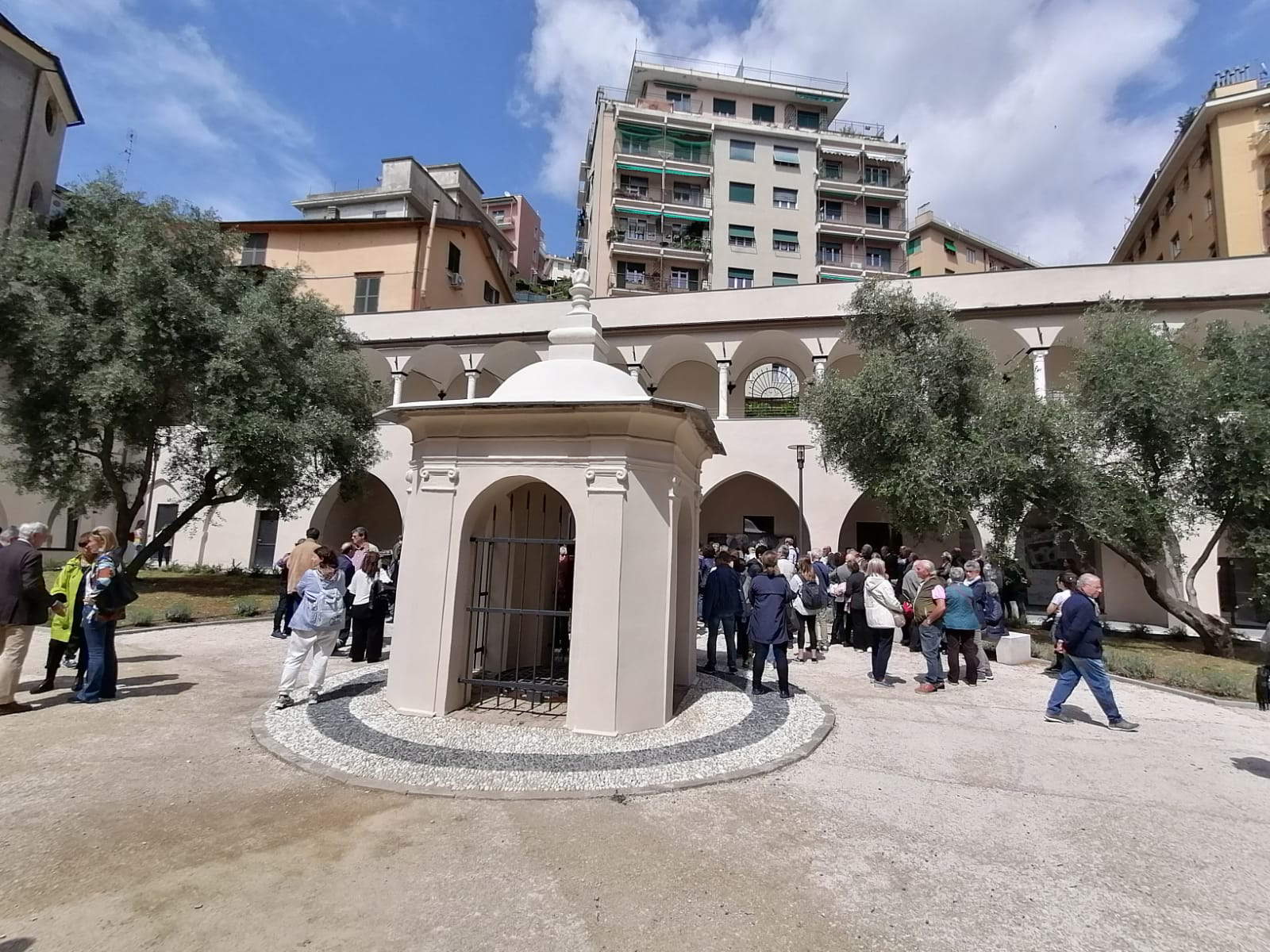
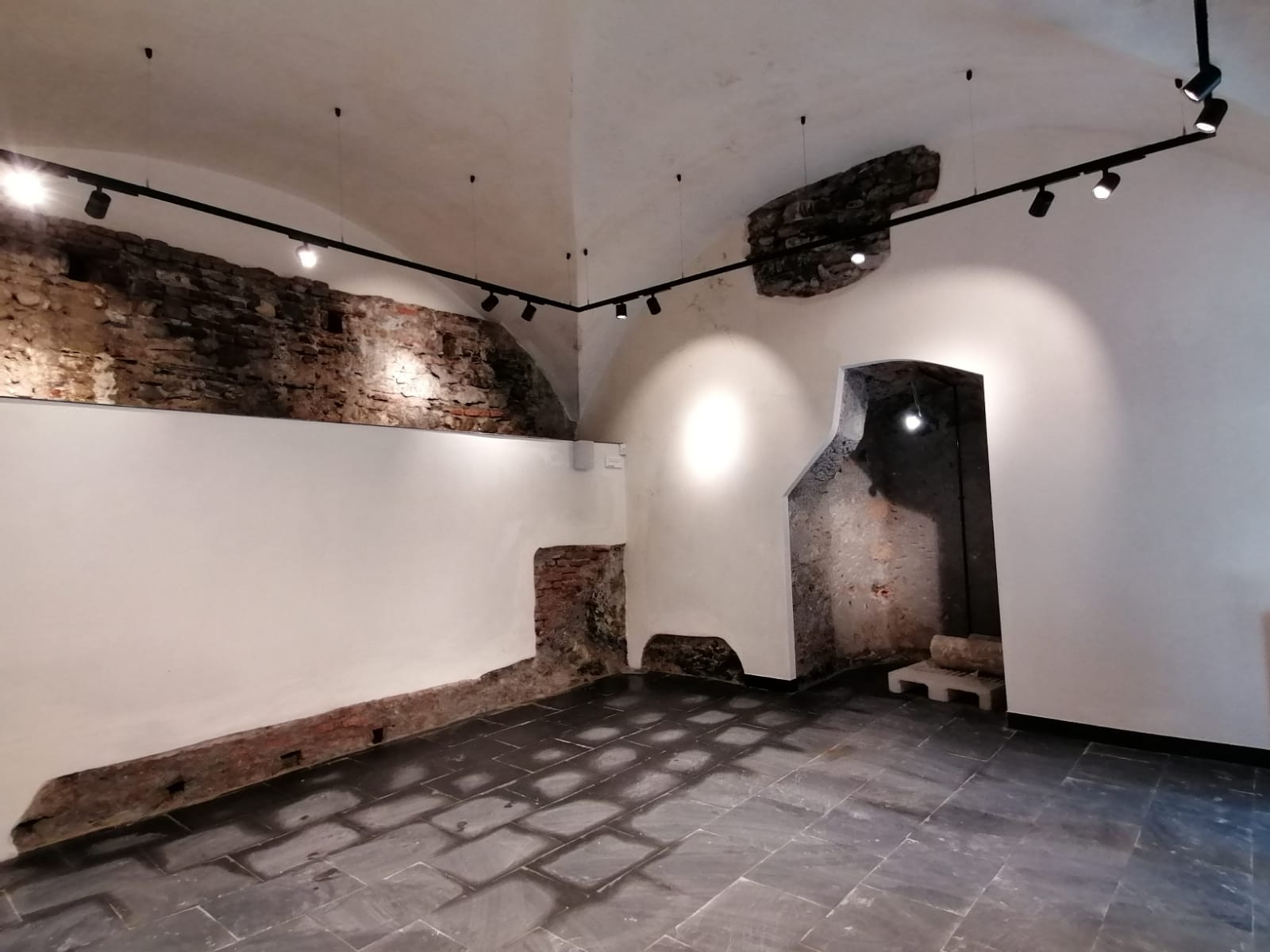

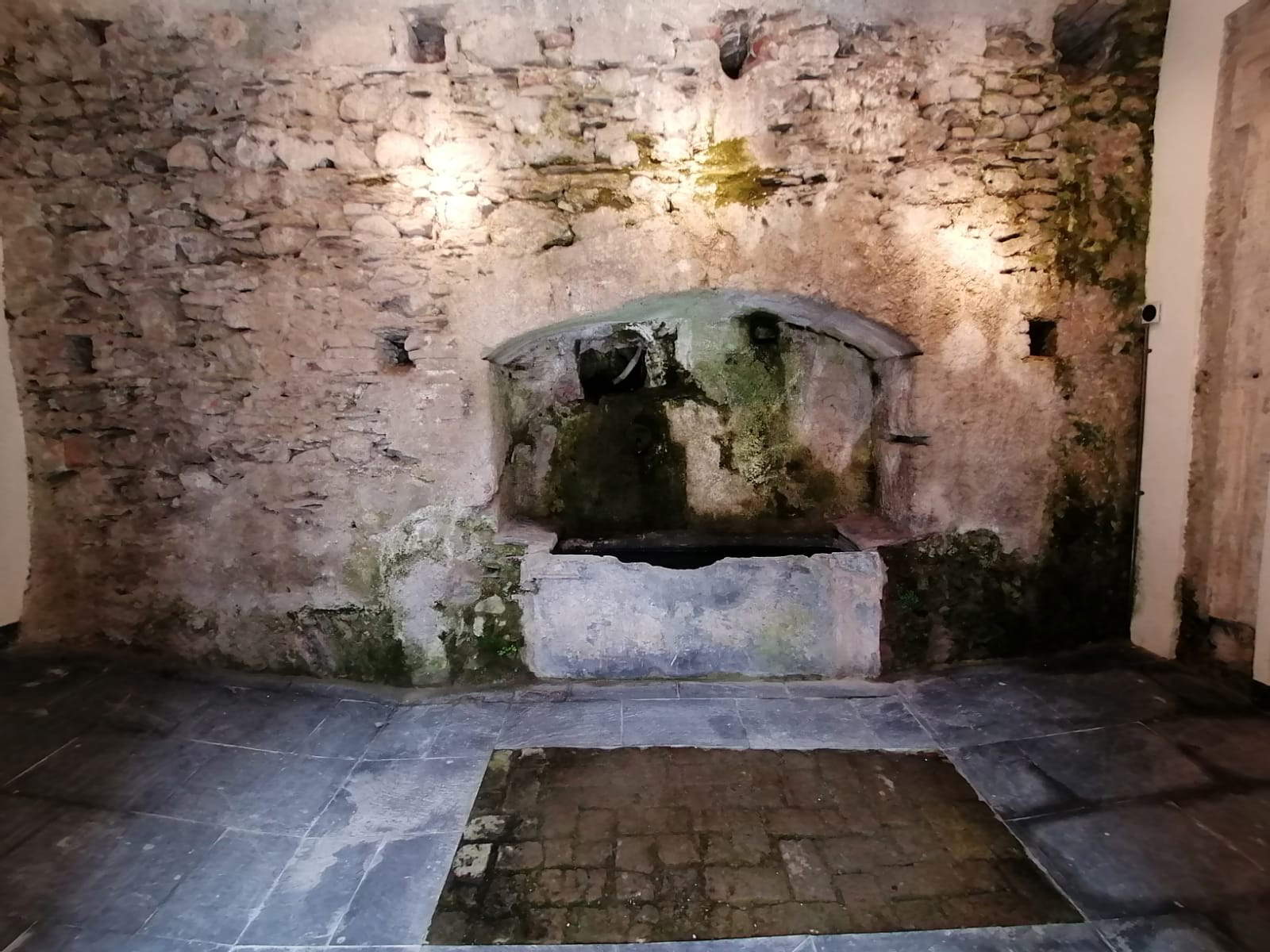
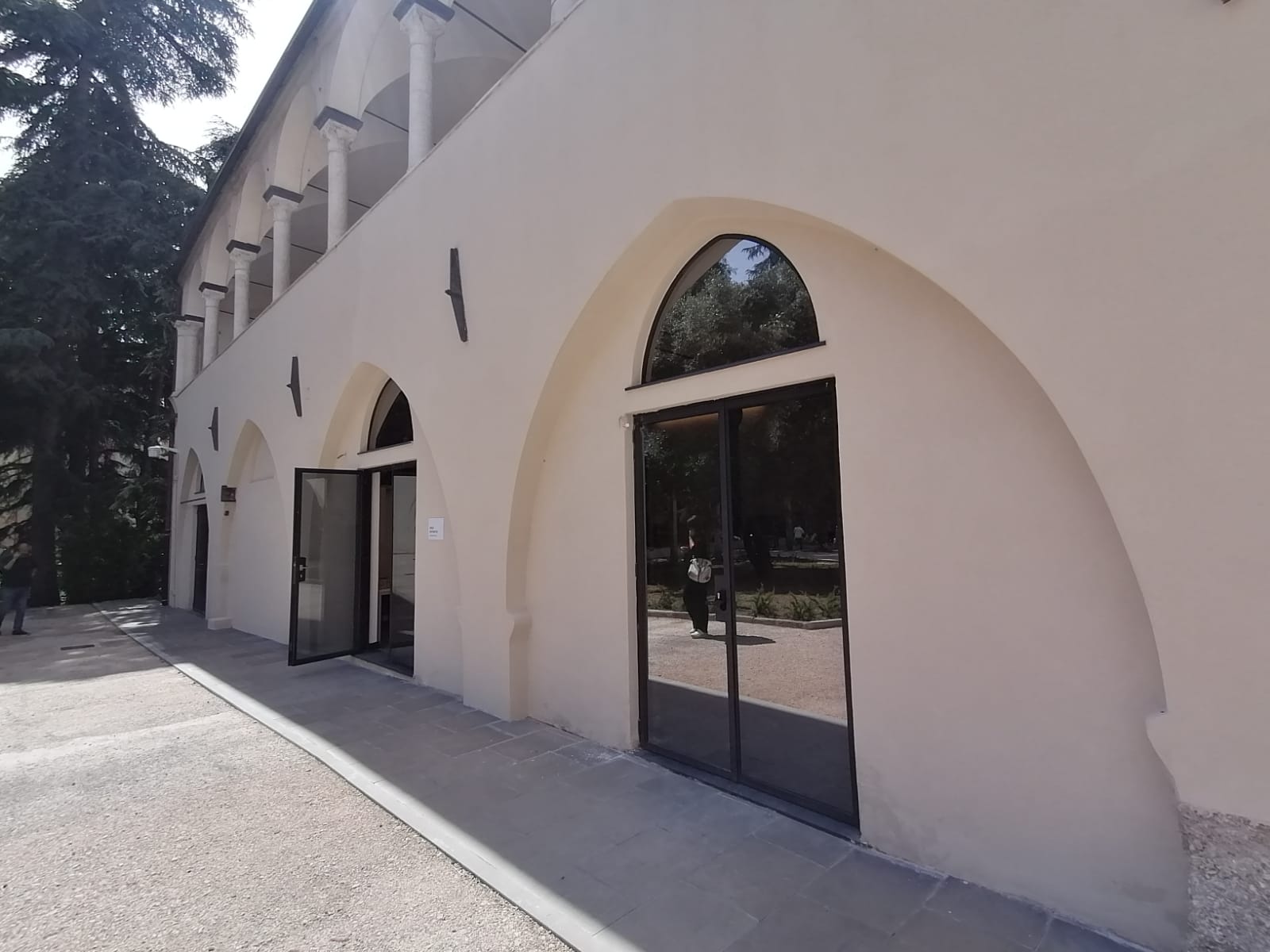
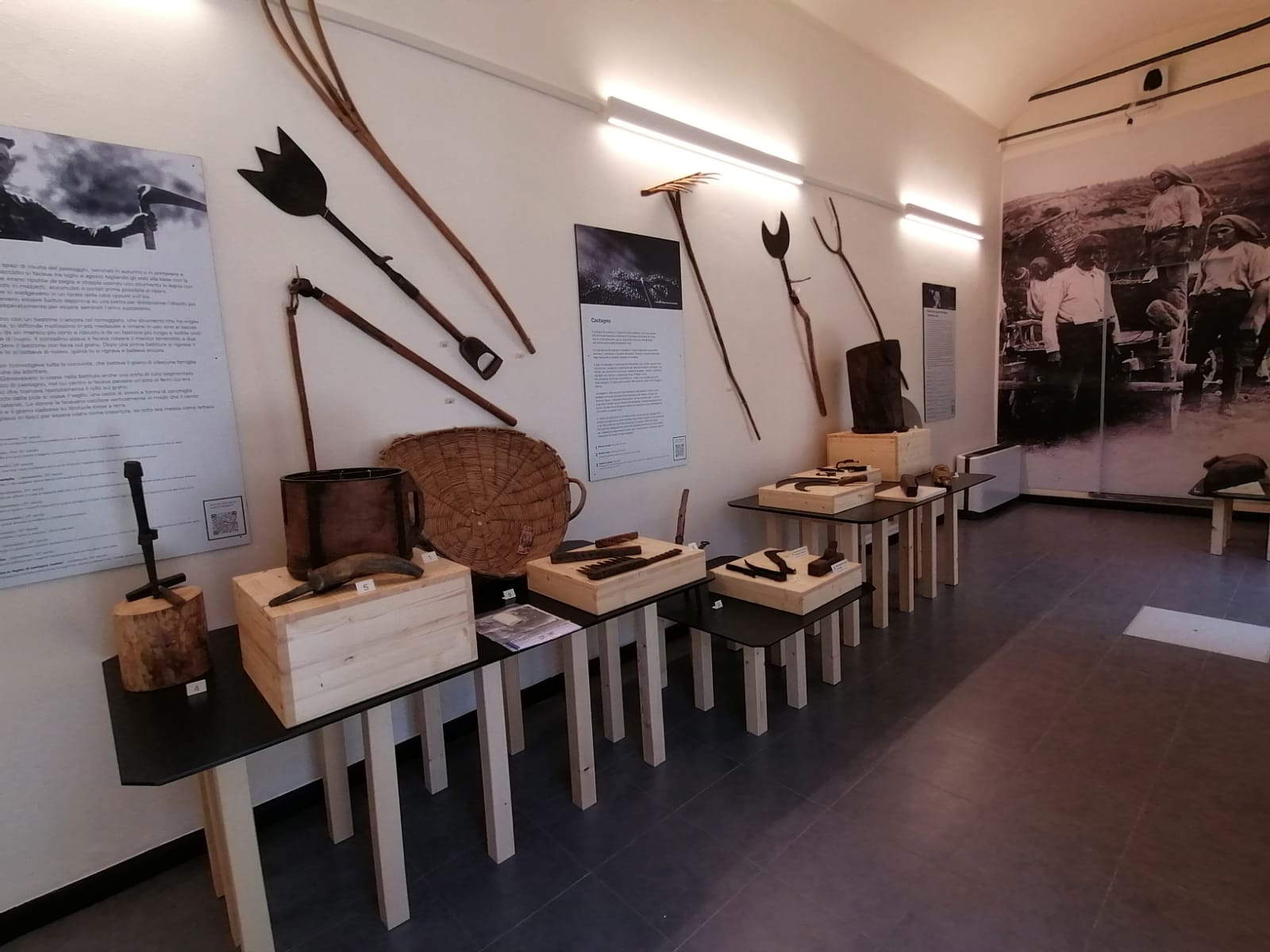
A first section, now open to the public, illustrates the territory of the Polcevera Valley, its traditions, characteristics and ways of managing the agrarian landscape, activities and cycles of agricultural production in the Genoese area through a small selection of pieces from the collections of the Museum of Peasant History and Culture at Garbo with everyday objects, tools made by the inhabitants of the area. The next step will be the setting up of the section devoted to the monumental complex of the Charterhouse of St. Bartholomew, the historical events and evidence of the newly restored medieval cloister, the 16th-century church and cloister now belonging to the Parish of St. Bartholomew and the archaeological discoveries made the restoration site. In addition to the furnace, recent archaeological discoveries made during work on the subway by the Soprintendenza Archeologia, Belle Arti e Paesaggio for the metropolitan city of Genoa and the Province of La Spezia will also find space in the Certosa. Thanks to the signing of an Enhancement Agreement between the Ministry and the Municipality of Genoa, the furnace from the Roman imperial age will be reconstructed in the Certosa, and findings that are still partly in progress will shed new light on the area’s events in Roman times, settlements and production activities.
The Carthusian Museum of Genoa aims to tell the stories of the area from the vicissitudes of the Ligurians of protohistory made famous by the Polcevera Table, to the chronicles of the Carthusian monastery, to the history and culture of the peasantry and the traditions of recent centuries.
From May to September, the museum can be visited Monday through Sunday by appointment for a minimum of 10 people. From October to December, the museum facility is open on Fridays and Saturdays from 2 to 5 p.m., Sundays from 10:30 a.m. to 12:30 p.m. and 2 to 5 p.m. It can be visited Monday through Thursday by appointment for a minimum of 10 people. Info and reservations at museidigenova.it.
Managing the Certosa Museum is the ATS composed of the lead partner Solidarietà e Lavoro Scs Onlus and assisted by Agorà Soc. Coop. Sociale, the ASCUR cooperative, COOPSSE, ADMaiora srl, and Associazione Lilliput, realities with different vocations, but all present in the Genoese and Valpolcevera area and which have devised a series of activities aimed at families, school groups and, in general, visitors to the complex. The final project for the management of the Museum was developed and shared during 7 meetings, from January to April, of the co-design table activated by the Museums Directorate, which took advantage of the legislation, an alternative to the Procurement Code, that regulates the participation of Third Sector entities in the design and management of public administration services, thus ensuring greater effectiveness in responding to citizens’ needs.
“The MUCE,” says Stefano Dagnino, president of Solidarietà e Lavoro Onlus and ATS leader, “was created with the intention of documenting the experience of the ancestors, the hard and strenuous life of farmers, by means of objects of the time and a variety of agricultural tools, objects and memories that send us back to days gone by but invite an instructive journey into the last century. The Museum, in addition to preserving the memory linked to rural society, turns its attention to the educational and laboratory sphere, with initiatives specially designed to make available to teachers and students of schools of different orders and degrees, a cultural offer that would meet their educational needs. With the experience gained over 40 years of activity, the network that will manage it will design museum development programs aimed at families, students, adult audiences and culturally motivated users, expanding and enhancing its presence in the area through theinitiating projects that help us understand our contemporary times, enabling us to appreciate what we have lost and what we have gained in the span of not even a century of our history. The ATS therefore wants to direct its efforts towards a high level educational and cultural offer that combines entertainment and culture with stimuli, interests and information that go to deposit in the long-term memory, leaving a trace in visitors, thanks to the experience of the various realities that compose it, active in the territory and in Genoa for a long time and with different characteristics, which will all intertwine and work together not only in the opening of the museum, but also in the realization of initiatives of various kinds. Our aim in the management of this new museum is to make the visitor an active part of a unique and lasting project, whose indispensable task is to preserve, enhance and divulge the tangible and intangible evidence of the rural culture that has been the backbone of our history, while at the same time looking forward because the preservation and promotion of local peculiarities are the future for the new generations that are born and grow up in our territory.”
 |
| Genoa, a new museum opens, the Museum of the Charterhouse of San Bartolomeo |
Warning: the translation into English of the original Italian article was created using automatic tools. We undertake to review all articles, but we do not guarantee the total absence of inaccuracies in the translation due to the program. You can find the original by clicking on the ITA button. If you find any mistake,please contact us.




























